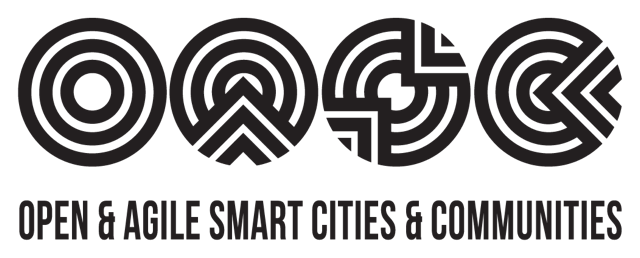By Omar Elloumi, Chair, Smart Cities WG, Alliance for the Internet of Things Innovation (AIOTI); and Martin Brynskov, Chair, Open & Agile Smart Cities (OASC).
As we enter 2019 and get ready for the Connected Smart Cities Conference 2019 this Thursday, 17 January, the timing seems perfect to consider the technical and business challenges that smart cities and communities will face in 2019.
We kicked-off 2018 with a contribution to ITU News (IoT-enabled Smart Cities: 3 priority areas in 2018) highlighting the value of horizontal approaches in coping with use-case proliferation and addressing the urgent needs of cross-vertical use cases such as those under study in the ITU Focus Group on ‘data processing and management to support IoT and smart cities & communities’.
These cross-vertical use cases are now entering the mainstream. But what does 2019 have in store for the smart city value chain? Three areas look set to receive considerable attention.
1. Data security, sustainability and governance
‘Data lakes’ can be key enablers for a citizen-centric data economy, but this will demand answers to open questions around data security, sustainability and governance.
The term ‘data lake’ originally became popular within the Hadoop open-source community. It refers to a set of common best practices for modern data management where data from legacy silos, such as city departments, can be stored in a central repository and managed according to a governance strategy.
The data stored in a data lake can be structured or unstructured, but enabling the data structures to converge according to a certain data model – for example, SAREF and SAREF4City ontologies backed by the European Commission’s DG Connect – would help dramatically in unifying data exposure, paving the way for analytics, dashboard, visualization and other popular cross-data-space uses of Big Data.
Cities clearly see value in such an approach, an approach which could also be linked to IoT platforms, and we see established ICT players and emerging start-ups offering “managed data lake as a service” solutions specifically targeted at smart cities and communities. But what are some of the hurdles to be overcome for this approach to go mainstream?
- A city-centric approach is not enough: The data lake should be built in a way that takes advantage of data from a larger set of stakeholders interacting with local governments or offering services to citizens, such as energy, utility, port, airport, mobility, environment, finance and media. A variety of issues remain to be solved when it comes to the governance and sustainability of data lakes, especially in relation to public-private infrastructure partnerships.
- Different data sources lead to differences in policies guiding data privacy, security and governance. Security and privacy in cross-domain use cases remains a complex issue, especially when dealing with personally identifiable data. Despite the existence of certain best practices leveraging the principles of trust management, trust propagation and delegation, the whole area of security and privacy in cross-domain setups remains a challenge that needs further investigation and guidelines, including with respect to certification.
- Private-sector and public-sector data owners might not be interested in contributing to data lakes until there is convergence around monetization models or business incentives. Here we see the relevance of discussions around blockchains and their role in managing transactions. A data lake may be used to store metadata needed for the discovery of data sellers and data buyers, as opposed to storing the actual data. This highlights the importance of ecosystem transaction management – the brokering of terms and conditions – regardless of whether or not monetization is involved.
IoT platforms must be capable of exchanging data, a challenge easily solved when IoT platforms implement common standards such as those developed by oneM2M. In other cases, data lakes could provide a technical solution for data-exchange requirements, in line with the OASC (Open & Agile Smart Cities) concept of Minimal Interoperability Mechanisms (MIMs).
2. Unlocking the potential of open data
Open data portals should consider uniform, standards-based APIs if they are to attract larger developer communities.
Dataportals.org is a website that tracks open data portals put in place by smart cities and communities. It lists 551 portals, and most are using different APIs. This makes application portability between different cities a big challenge.
At the technical level, we do not yet have an agreed standard to expose, and eventually open, city data to application developers. This forms a key barrier to progress for a great number of start-ups and researchers working in data analytics and Artificial Intelligence (AI) who are starving for high-quality data that they can process, enrich, analyze and train their algorithms with.
A significant amount of the data we collect never gets leveraged. And this relates directly to challenges surrounding data models and API standards for utilizing the data.
We are however seeing the emergence of standards-based options with potential to lay the foundation for much-needed convergence in this area, a notable example being the API developed by ETSI ISG Context Information Management. OASC, a city-led effort, mirrors this work in its ‘Context Information Management MIM’ which is currently under adoption by the OASC Council of Cities.
Opening-up both public and private-sector information, on common technical ground and within a governance framework accepted by all stakeholders, would be a key step towards delivering on the promises of an IoT and AI-enabled future.
Smart cities and communities are driving this convergence.
3. 5G-ready cities
The topic of 5G-ready cities deserves a blog of its own, but we thought we would offer a taste of what such a blog could address.
The IMT-2020/5G vision is one of a true multiservice network able to address the connectivity needs of virtually any application one could think of in the consumer, enterprise and industrial IoT space. And this is really what IoT-enabled smart cities and communities are all about.
5G has been specified from the ground-up to support enhanced mobile broadband, massive-scale IoT, and ultra-reliable and low latency communications. 5G networks are also expected to provide unprecedented levels of flexibility, enabling the cost-effective delivery of new services thanks to virtualization, network slicing and edge-computing capabilities.
Smart cities and communities have the potential to play an instrumental role in expediting 5G deployment and time to market. City infrastructure – multiservice lampposts, for instance – could offer valuable support to the deployment of 5G equipment, especially where high densities of 5G equipment are required. As cities rethink, maintain or revamp their infrastructure, it is very important that they keep 5G in mind.
A 5G-ready city – a city ready for 5G as well as IoT – is one that is already thinking about 5G requirements and the business models needed to support 5G deployment. As these investigations intensify, we will see cities paying increasing attention to infrastructure partnerships, especially as they relate to cities and network operators’ respective roles, benefits and revenue streams.

